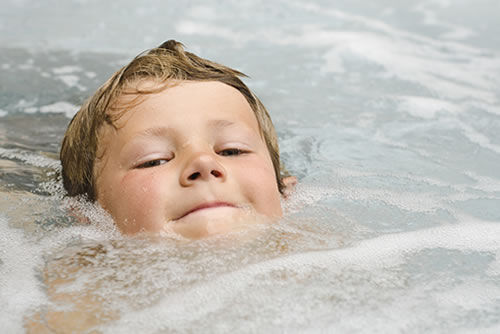So you want to soak in your own backyard hot tub while the stars are out? We understand. After a long Canadian winter day, nothing compares to slipping into those warm, bubbling waters. The problem is that not all hot tubs are made equal, and some brands will cause you more headaches than they will relaxation.
Many Canadians looking to enjoy the benefits of hydrotherapy should be aware that brand selection is crucial. You must choose wisely which hot tub brand to bring home because there are dozens of options available. Some have a bad reputation for poor performance, bad customer service, and problems that will make you regret your investment more quickly than you can say “arctic blast.”
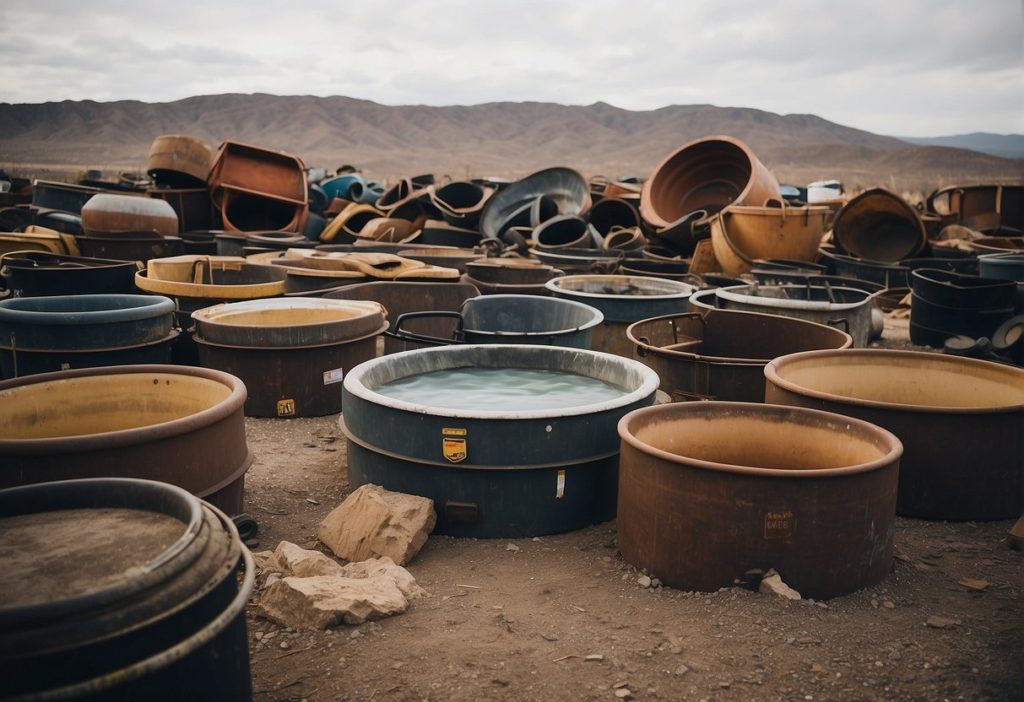
To be honest, we really like Beachcomber’s quality, so it’s not on our list of brands to avoid. However, we also recognize that they might not be your first choice, and that’s okay. We’ve put together this straightforward guide to help you find the ideal hot tub that meets all of your needs out of good faith.
This article explores the types of hot tubs that are best avoided in Canada. You will know exactly what warning signs to look out for and which companies routinely let their customers down by the time you finish reading. Sincerely? A lemon that will break your bank and make you lose your mind is not worthy of your backyard.
Understanding the Quality of Hot Tubs
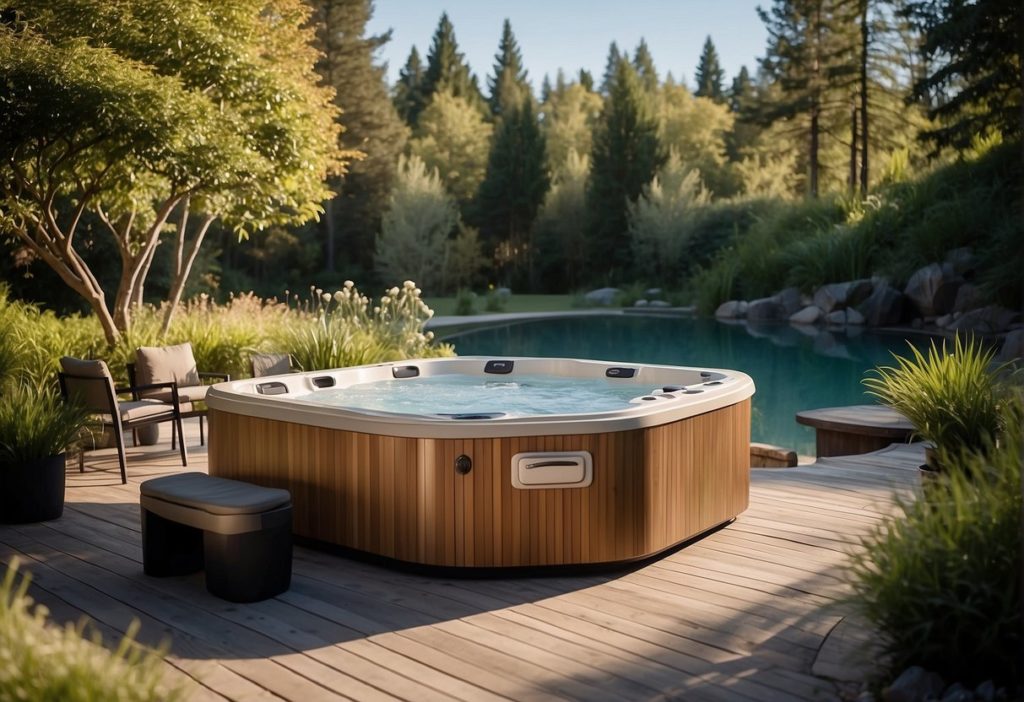
Standards for Materials and Construction
The construction and materials used are where the rubber meets the road when discussing hot tub quality. The foundation of a well-made hot tub is a sturdy shell, typically made of acrylic, that can withstand the severe Canadian climate without fading or cracking after a few seasons.
But the shell isn’t all that matters. Corrosion-resistant materials must be used to construct the frame, and UV-resistant synthetics should be used for the cabinet to prevent it from becoming unsightly after just one summer. We’ve seen far too many hot tubs with these fundamentals compromised, and believe me, it shows.
Top Hot Tub Brands That Are Worth Your Time:
- Beachcomber Hot Tubs
- Master Spas
- Nordic Hot Tubs
The difference between the good and the bad is that high-quality manufacturers don’t cut corners. They know their reputation is on the line, so they use the right materials. Brands of lesser quality? They’ll use less expensive substitutes that appear fine in the store but break down when you get them home.
Your long-term expenses are also directly impacted by the build quality. Yes, that cheap hot tub may look good at first, but those savings quickly vanish when you have to call for repairs every few months.
Energy Efficiency and Insulation
Let’s discuss energy efficiency, a topic that will cost you money each month. Instead of keeping your water warm, a poorly insulated hot tub is essentially a money pit that heats the great outdoors.
Having adequate insulation is not merely a luxury; it is necessary. Full foam insulation is one example of an advanced insulation technology or maintaining water temperature that keeps heat in your water rather than escaping into the Canadian winter air. We’ve tested hot tubs that lose so much heat that you’d think they had holes in them.
Principal Advantages of Adequate Insulation:
- You won’t cry over your hydro bill.
- Stable water temperature
- Reduced strain on your heating system
Businesses like Nordic, Beachcomber, and Master Spas have figured this out. They understand that you don’t want to spend more than $200 a month to keep your hot tub warm, so they make energy-efficient hot tub investments in effective heating and insulation systems. In order to maintain a clean and pleasurable hydrotherapy experience, these manufacturers also combine their insulation with cutting-edge filtration systems.
The bottom line? When a hot tub manufacturer cuts insulation, they are essentially requesting that you use your monthly energy bills to cover their cost-cutting. It’s not exactly a fair deal, is it?
Important Hot Tub Features to Consider
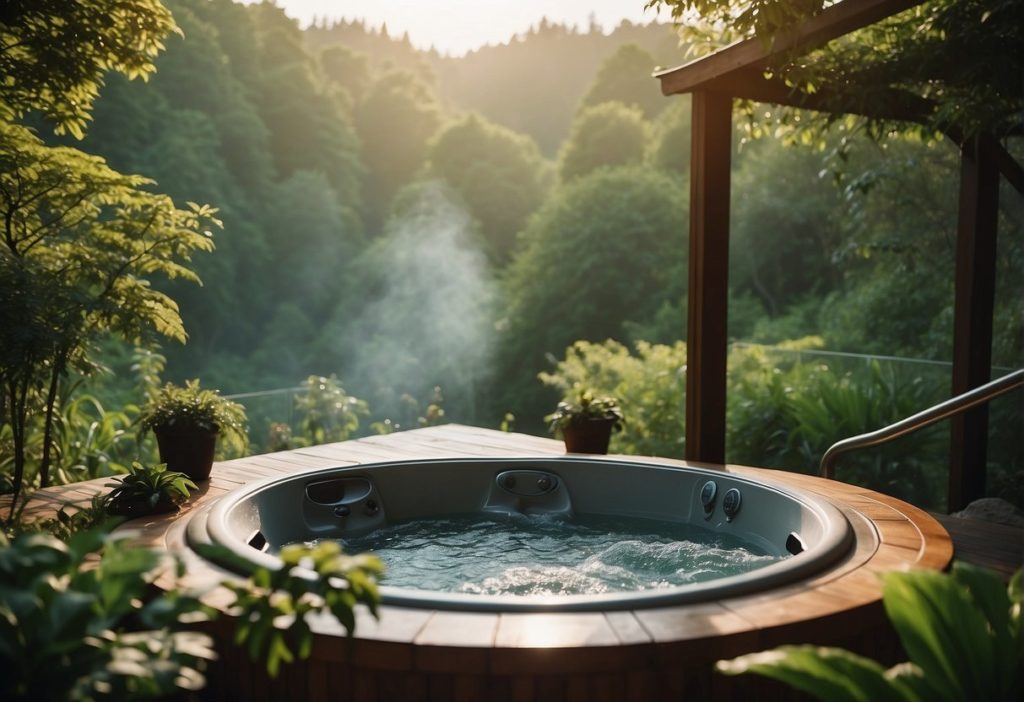
Size and Design Are More Important Than You May Think
The number of people you wish to fit in the hot tub is a significant consideration, but it’s not the only factor when choosing a hot tub. We’ve witnessed people fall victim to the “bigger is better” mentality and wind up with an expensive, deck-dominant hot tub.
Consider your usage and available space practically. If you and your partner spend most of your time relaxing after work, a comfortable two-person model might be ideal. However, you’ll want something that can accommodate six to eight people without everyone playing footsie if you’re organizing frequent get-togethers.Remember that larger hot tubs require more chemicals to balance the water, higher initial costs, and higher monthly operating expenses. The long-term commitment you make is more important than the purchase price alone.
Options for Jets and Hydrotherapy
Things start to get interesting at this point. Whether you get a hydrotherapy experience or just pricey bubbles depends on your hot tub’s jets. Stress relief and sore muscles can be greatly improved by high-quality jets with the right water flow. Low-cost aircraft? In essence, they are pool toys.
Seek out hot tubs with a range of features, such as rotating jets for wider coverage, pulsating jets for a deep tissue massage, and targeted jets for particular muscle groups. Because leaky jets are a maintenance nightmare, the shell-to-jet interface must also be properly sealed.
What Is Most Important:
- Various jet types for personalized treatment
- Superior heater and pump system
- Effective water sanitization using UV or ozone systems
- Filtration done right for water that is crystal clear
- Ambient LED lighting (because why not?)
- Cutting-edge capabilities like smartphone control
We’ve used hot tubs with all the extras, and to be honest, cutting-edge features like maintaining water temperature, mechanical cover lifts and app control can be revolutionary. The problem is that these features are only important if the fundamentals are sound. If the pump is unable to maintain the right pressure or the jets are poorly designed, a sophisticated control system won’t help.
Assessing Hot Tub Manufacturers
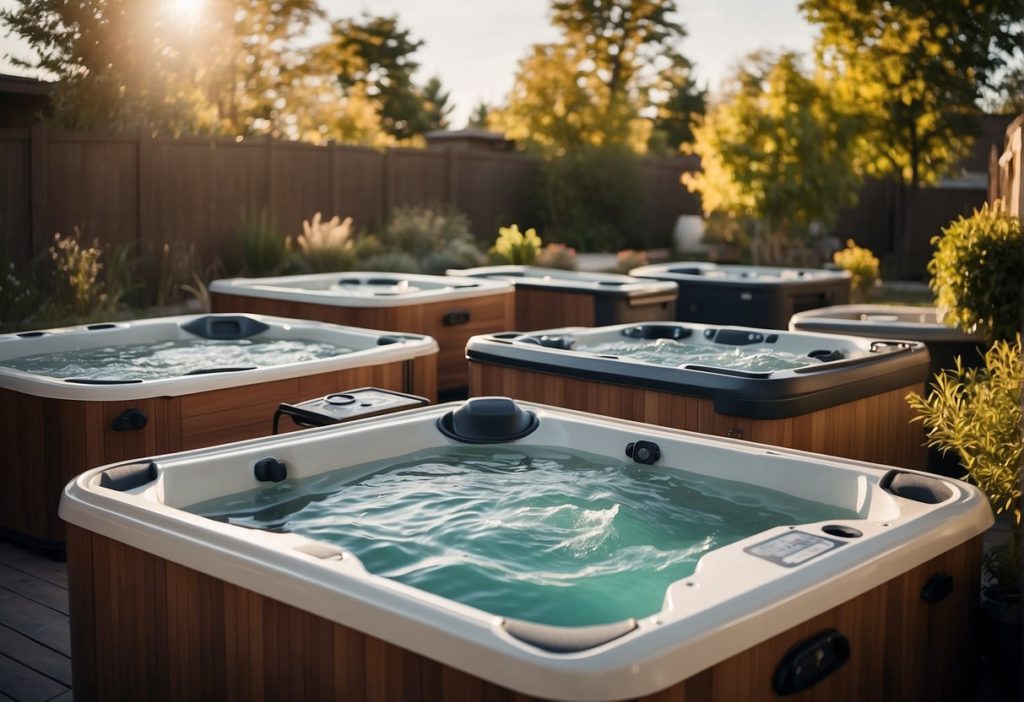
Reviews and Reputation of the Brand
Now is the time to put on your detective hat. Building a brand’s reputation takes time, and clever marketing cannot permanently falsify it. Real customer experiences across various platforms are what you want from brands, not just the carefully chosen testimonials on their website.
Examine reviews for trends. Are consumers complimenting energy efficiency and durability? Fantastic sign. Are they complaining about the same things all the time? Red flag. We’ve observed that while problematic brands receive criticism for poor construction and subpar service, high-quality brands like Beachcomber, Master Spas, and Nordic typically receive praise for their build quality and customer support.
Brands with a mixed reputation can be challenging. A business may have a few subpar models but perform well overall. At other times, they are consistently average, with the odd success story. Before you spend your hard-earned money, it is your responsibility to determine which category they fit into.
Guarantee and Customer Support
You can learn two key things from a warranty: how much the manufacturer believes in their product and how much support you will receive if something goes wrong. And believe us, things can go wrong with hot tubs.
What Hot Tub Warranties Should Include:
- Duration: Manufacturers typically believe their products will last longer when they offer longer warranties. Read the fine print, though, because a 10-year warranty that only covers the shell for years 6–10 isn’t as good as it seems.
- Coverage: The best warranties include both labor and parts coverage. At least for the first few years, the shell, plumbing, and electrical components should all be protected.
- Transferability: A transferable warranty adds value and demonstrates the manufacturer’s long-term commitment to their product in the event that you decide to sell your house.
You can truly see a company’s true nature in its customer service. You want a company that actually answers the phone and offers assistance when your hot tub decides to stop heating in the middle of January. Reputable brands usually have authorized service networks and quick-response support staff across Canada.
We’ve dealt with manufacturers who go out of their way to make things right and others who treat warranty claims like personal assaults on their reputation. Can you guess which ones we suggest?
Brands of Hot Tubs Known for Excellence

Beachcomber Hot Tubs
The home team should come first. For good reason, Beachcomber Hot Tubs has been a Canadian success story; they construct spas that are able to withstand our climate and provide strong support for them. They have everything from large family-sized units to small two-person models.
What makes Beachcomber unique? They prioritize energy efficiency without compromising functionality. Even when it’s -30°C outside, your operating expenses will remain affordable because their insulation systems are made for Canadian conditions. Additionally, they provide customization choices so you can fit your hot tub to your unique requirements and available space.
Over the years, we’ve installed dozens of Beachcomber units, and every time, we’ve received positive feedback. Consumers value the energy efficiency, the build quality, and the fact that a parliamentary act is not necessary to obtain service.
Customization and Master Spas
Master Spas introduces significant American innovation to the Canadian market. Instead of settling for whatever is on the lot, these people want you to build a hot tub that meets your specific needs.
With options for varying massage intensities and coverage areas, their jet systems are especially impressive. Therapy configurations, color schemes, and seating arrangements are all customizable. It’s similar to building a hot tub from the ground up, but with the assurance of a well-known manufacturer.
It’s also worth mentioning Bullfrog Spas. They are comparable in quality to Master Spas, which are renowned for their energy-efficient operations and adaptable therapy systems. Both brands are aware that different people have different requirements and tastes.
Local Vendors and Canadian Brands
Keep the local players in mind. Canadian vendors such as Hydropool and Arctic Spas have established a solid reputation for catering to clients who are aware of severe weather conditions and high standards. These businesses are aware of what does and does not work in our climate.
Additionally, local vendors frequently offer superior post-purchase assistance. When you require assistance, you are interacting with locals who are aware of your circumstances. They are not attempting to troubleshoot winter issues in Manitoba from a Florida call center.
Specifically, Arctic Spas has made cold-weather performance the cornerstone of their brand. Their heating capacity and insulation systems are made for clients who use their hot tubs all year long, even when there is a lot of snow on the outside.
Brands of Hot Tubs with Unfavorable Reviews

The Brands We Can’t Identify Officially (But You Should Do Your Research)
This is where the legal situation becomes interesting. We can tell you what patterns to look out for, but we are unable to specifically name brands without risking legal action. About four well-known brands frequently appear in forums for complaints and threads with unfavorable reviews.
Poor construction, unreliable parts, and customer service that ranges from unhelpful to downright hostile are typically the same problems. These companies frequently employ high-pressure sales techniques to get clients to sign right away with temporary deals that, for some reason, never end.
Warning Signs to Look Out for:
- Sales pressure and “limited time” offers
- Uncertain warranty conditions or exclusions from coverage
- Frequently unfavorable internet reviews on a variety of platforms
- Absence of awards or certifications from the industry
- Insufficient openness regarding parts and production
Customers who had negative experiences with these brands have come to us, and the tales are strikingly similar. Customer service representatives who act like warranty claims, heating systems that can’t maintain temperature, and leaky shells within the first year are all personal insults.
The annoying aspect? These companies frequently have eye-catching showrooms and clever marketing. Although they are skilled at presenting their goods, the quality is not up to par. This is why completing your homework is so important.
Investments and Pricing Insights

Budgeting and Inexpensive Options
Let’s talk about pricing options because the cost of a hot tub can vary greatly. Inflatable hot tubs start at about $1,000 if you’re just getting started. They will allow you to determine whether hot tubbing is your thing, but they won’t give you the full spa experience.
Roto-molded hot tubs cost between $6,500 and $10,000. They won’t win any beauty pageants because they’re made of molded plastic, but if money is tight, they can still perform admirably. Just don’t count on them to last as long as more expensive models.
For most people, the $10,000–$20,000 range is the higher end of the spectrum. This gives you features that make ownership pleasurable rather than stressful, as well as high-quality construction, sound insulation, and dependable parts. Indeed, it is a substantial investment, but the benefits of dependability and satisfaction outweigh the costs.
Long-Term Costs and Investment Factors
Operating costs are something that most people don’t think about until after they make a purchase. In Canada, the average hot tub costs about $100 a month to operate, which includes water, chemicals, electricity, and filter maintenance. That is predicated on consistent use and respectable energy efficiency.
However—and this is crucial—that figure can vary greatly depending on the efficiency of your hot tub and the utility rates in your area. In milder climates, an efficient hot tub might cost $60 per month, while a poorly insulated one in Northern Ontario might cost $200 or more.
Long-term Cost-Affecting Factors:
- Quality of insulation and energy efficiency
- Rates of local electricity
- How frequently do you use the hot tub?
- Maintenance of water chemistry
- Costs of replacement and repair
Here, the quality of the brand is crucial. Although reputable brands like Beachcomber may be more expensive up front, they usually result in lower operating expenses and fewer repair bills. Even though they might seem like deals at first, low-cost brands that break down frequently can end up costing more in the long run.
After only a few years, we’ve seen customers replace entire hot tubs because the constant maintenance expenses made it unfeasible to keep them. You don’t want to be in that situation.
Setting Up and Maintaining

Location and Space Needs
Make sure you have the infrastructure and space to support a hot tub before you fall in love with one. When filled with water and people, hot tubs weigh more than 4,000 pounds. That weight must be supported by your patio or deck without endangering people’s safety.
You might be surprised to learn how important location is. Privacy, wind exposure, and proximity to your electrical panel must all be taken into account, even though you want easy access for users and maintenance. When you’re running electrical service, installing a hot tub 100 feet from your house quickly becomes costly.
Important Location Factors:
- Support structure for filled weight
- Level surface (reinforced deck or concrete pad)
- Access to electricity for 220V service
- Neighbors’ privacy
- Defense against the dominant winds
We’ve assisted clients with installation planning, and those who consider these factors in advance report far better results than those who don’t.
Covers and Continued Upkeep
Having a high-quality cover is not only desirable, but also necessary. Your hot tub cover retains heat, keeps debris out, and keeps people from getting inside. Low-quality covers break easily and allow heat to escape, increasing your operating expenses.
Frequent upkeep keeps your water safe and your hot tub operating smoothly. This entails performing a thorough drain and refill every three to four months, cleaning filters once a month, and checking and adjusting chemical levels every week (or more frequently with heavy use).
Crucial Upkeep Activities:
- Water testing and chemical adjustment every week
- Filter cleaning every month
- Drain and refill every three months.
- Pumps and heating components are inspected annually.
Detailed maintenance instructions and prompt technical support are typically provided by manufacturers that offer good support. When comparing brands, it’s important to take that into account because good experience is what keeps your investment operating for many years..
When to Buy a Hot Tub

Seasonal Rates and the Best Time to Buy
You can save a lot of money by timing your hot tub purchase. Hot tubs, like the majority of seasonal products, are sold during slower times when dealers are eager to clear out stock.
In Canada, the best times to purchase a hot tub are in the fall and winter. Dealers are willing to haggle over price and extras in order to make room for new models. Customers who shop during off-peak times have saved us more than $2,000.
Another chance is to take advantage of spring home improvement sales, particularly if you’re planning a comprehensive backyard renovation. Rather than purchasing each item separately, many dealers provide package deals that include installation, chemicals, and accessories at lower costs.
Money-Saving Buying Advice:
- For the best deals, shop in the fall and winter.
- Seek out packages that cover supplies and setup.
- For extra savings, take a look at last year’s models.
- Take into account all expenses, including the purchase price, installation, and ongoing monthly operations.
The typical investment for a hot tub is about $10,000, but keep in mind that’s only the beginning. Chemicals, accessories, electrical work, and installation can easily raise your overall cost by an additional $2,000 to $3,000. By budgeting for these costs in advance, sticker shock can be avoided later.
Frequently Asked Questions
Because of its poor quality, which hot tub brand should one avoid?
For legal reasons, we are unable to name specific brands, but we can advise you to avoid manufacturers who have a history of receiving negative reviews on a variety of platforms. Unreliable construction, component failures, and poor customer service are among the frequent problems. Before making a purchase, do extensive research on any brand; if several customers are expressing the same issues, it’s not a coincidence.
Which hot tub brands are the least recommended due to common problems?
The trends—leaking shells, unreliable heating systems, prematurely failing pumps, and customer service that handles warranty claims like personal assaults—are strikingly similar. These companies frequently employ high-pressure sales techniques to pressure consumers into making decisions, then vanish when issues occur.
Which hot tub brands are the least reliable, according to customer reviews?
The same problems we observe—faulty parts, construction issues, and poor customer service—are frequently brought up in consumer reports. Brands that receive a lot of negative reviews usually have ongoing problems with quality control rather than isolated ones. It’s a manufacturing issue, not bad luck, when numerous customers report similar failures.
How can I spot subpar hot tub brands before making a purchase?
Your best defense is research. Examine several review sites, speak with hot tub owners, and pose challenging queries regarding warranties and maintenance. Because they have faith in their products, quality brands welcome criticism. Untrustworthy companies avoid inquiries and try to convince you to buy right away.
What comments regarding dubious hot tub brands are frequently posted on forums?
Specific failures, such as leaking jets, cracked shells, burning heating elements, and seizing pump motors, are typically the focus of forum discussions. However, the most detrimental comments are about customer service—brands that refuse to honor warranties, call-unresponsive service departments, and repair networks that are nonexistent when you need them.
What safety issues are connected to unrecommended hot tub brands?
Subpar electrical components, insufficient water sanitization systems, and potentially harmful structural failures are among the safety concerns associated with low-quality brands. Certain brands use parts that don’t adhere to Canadian electrical codes or skimp on safety certifications. It’s time to look elsewhere when relaxation equipment starts to pose a risk to public safety.


